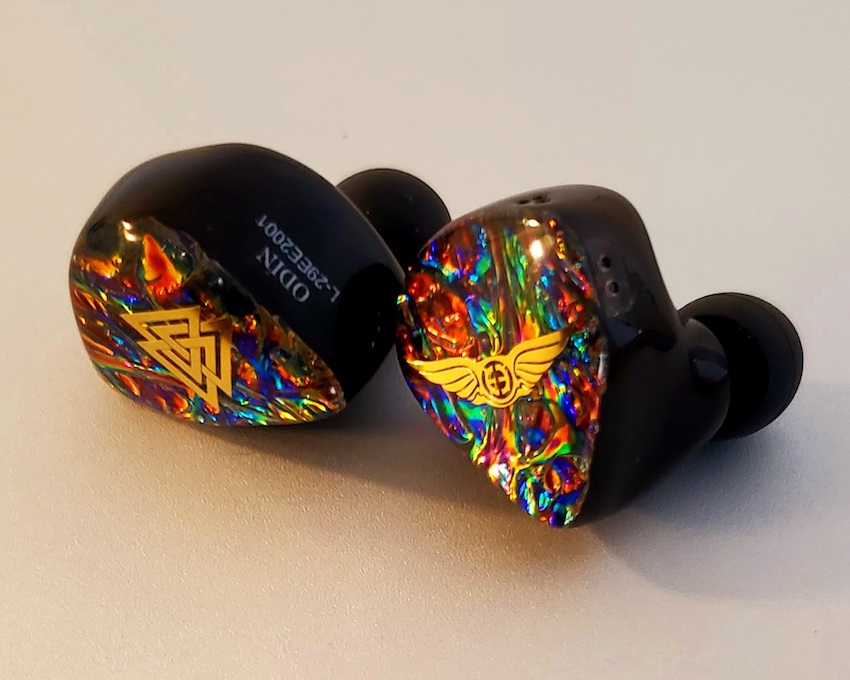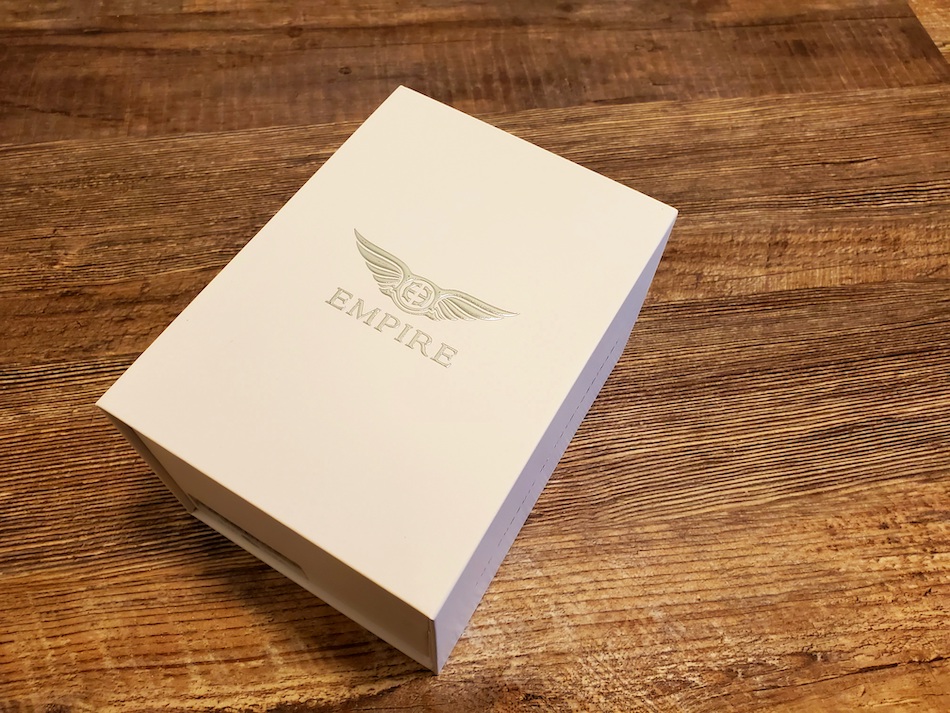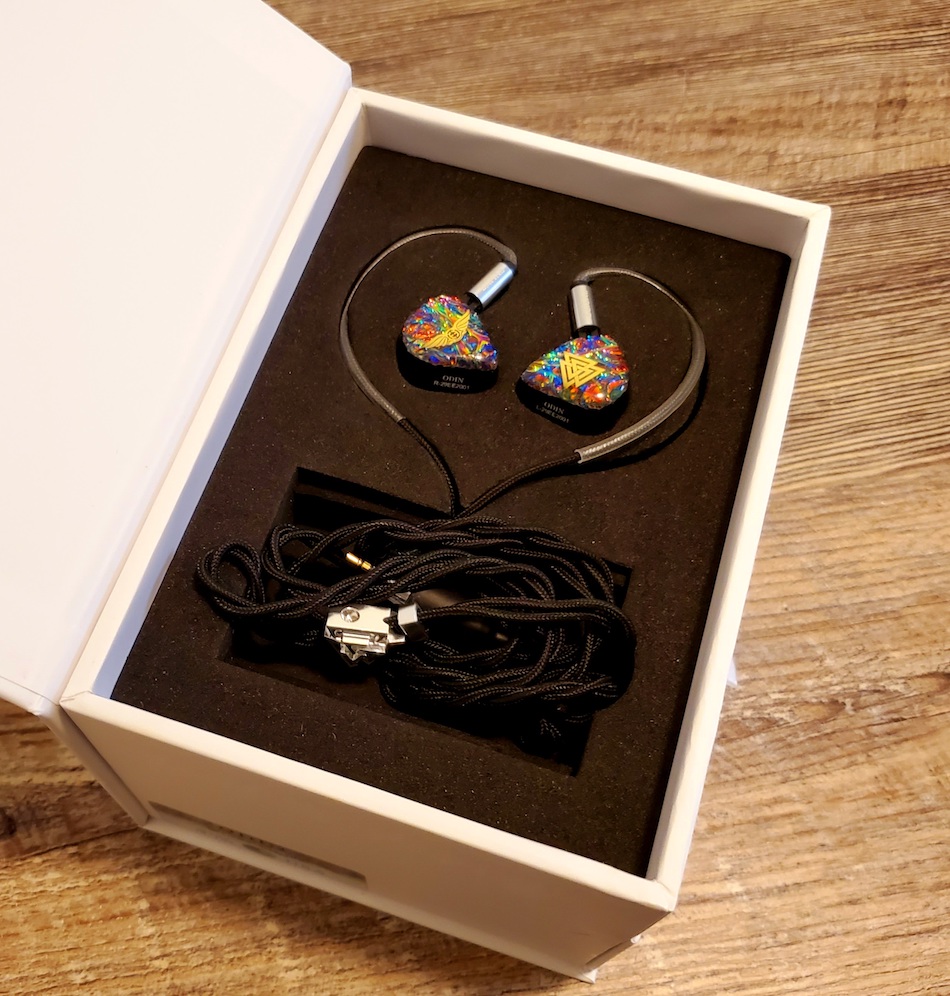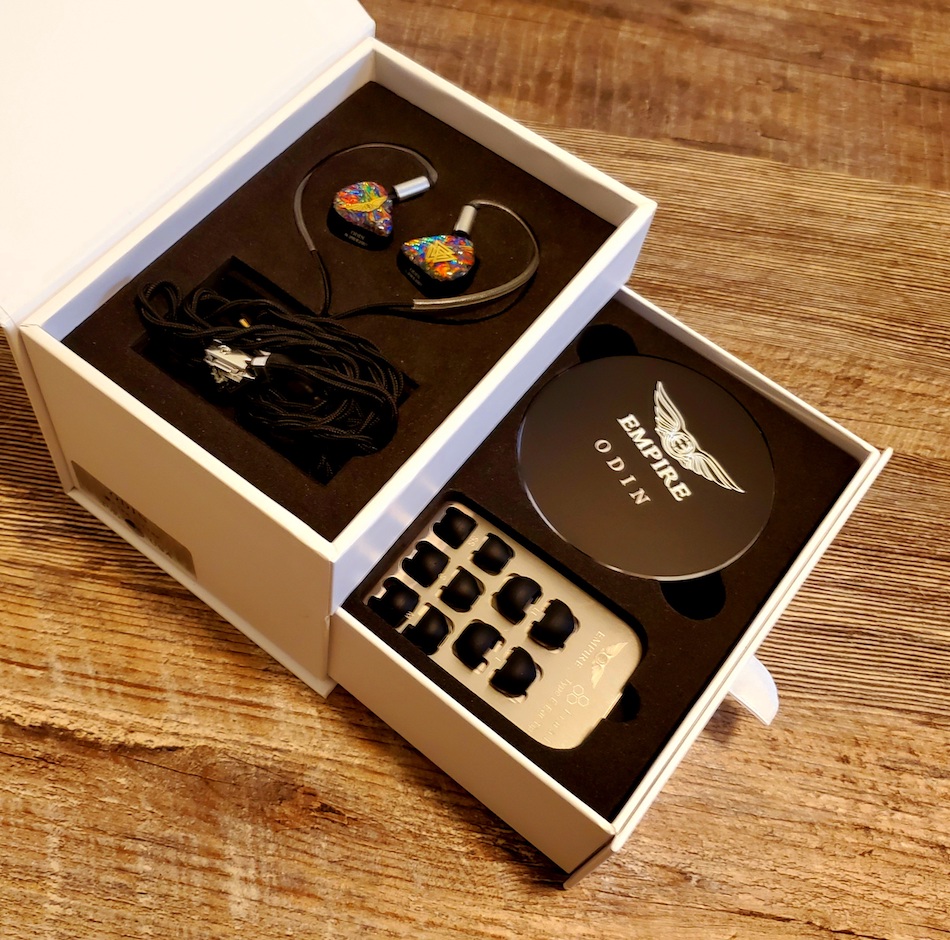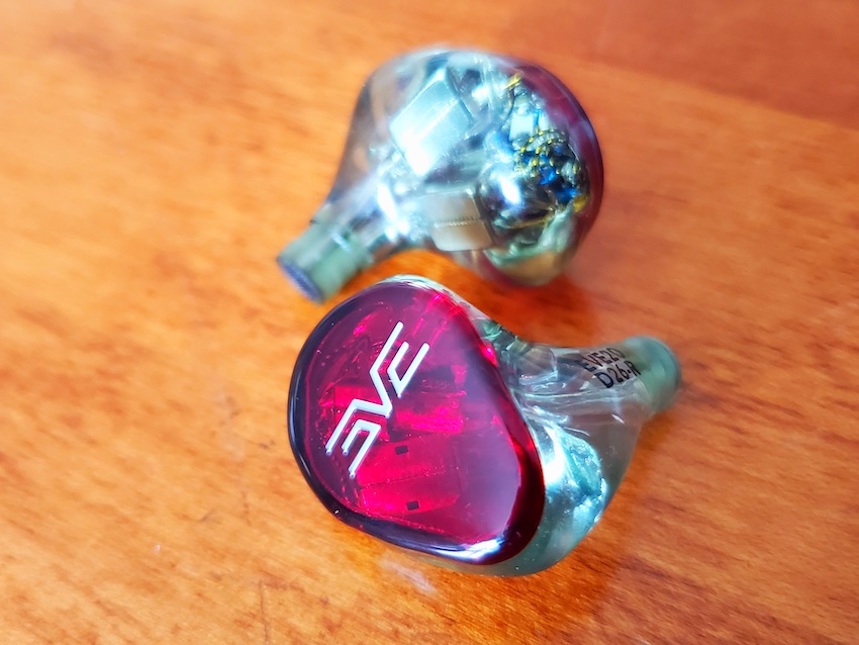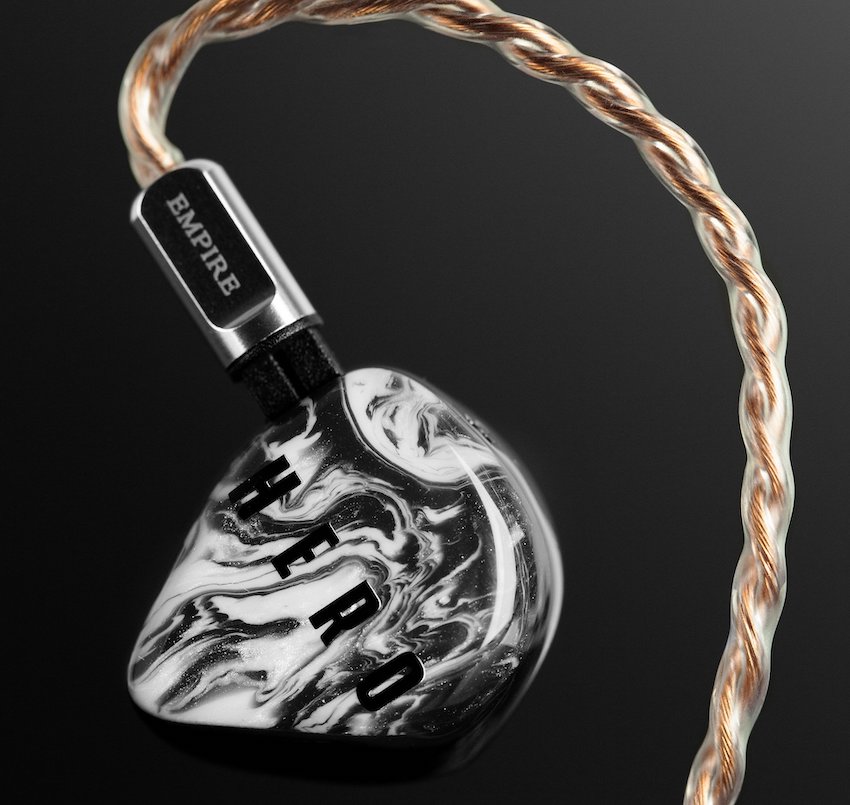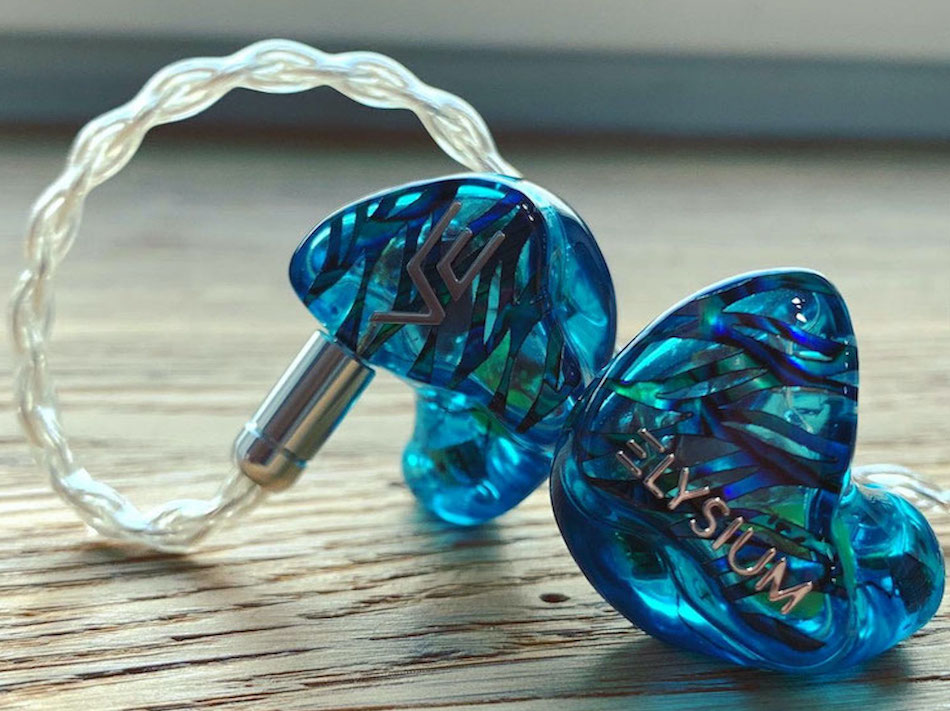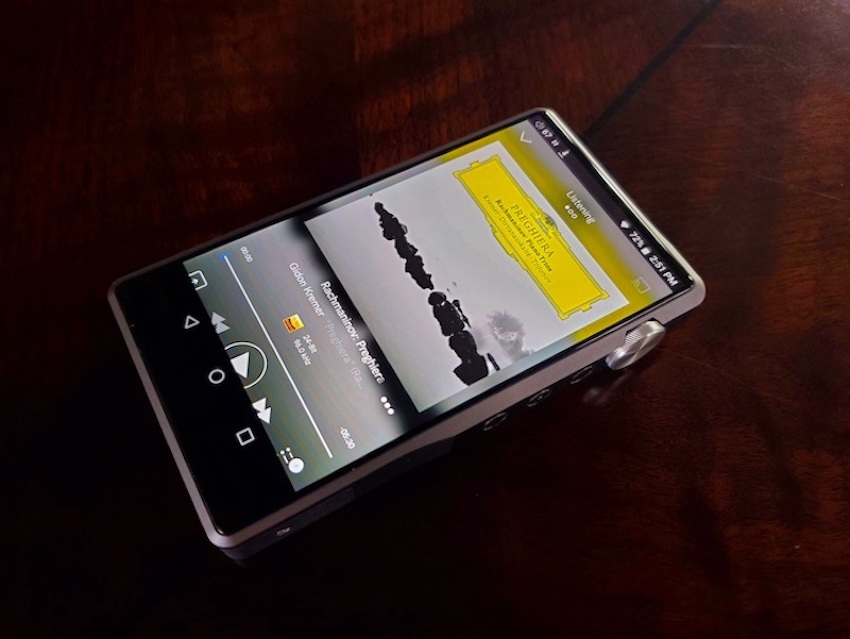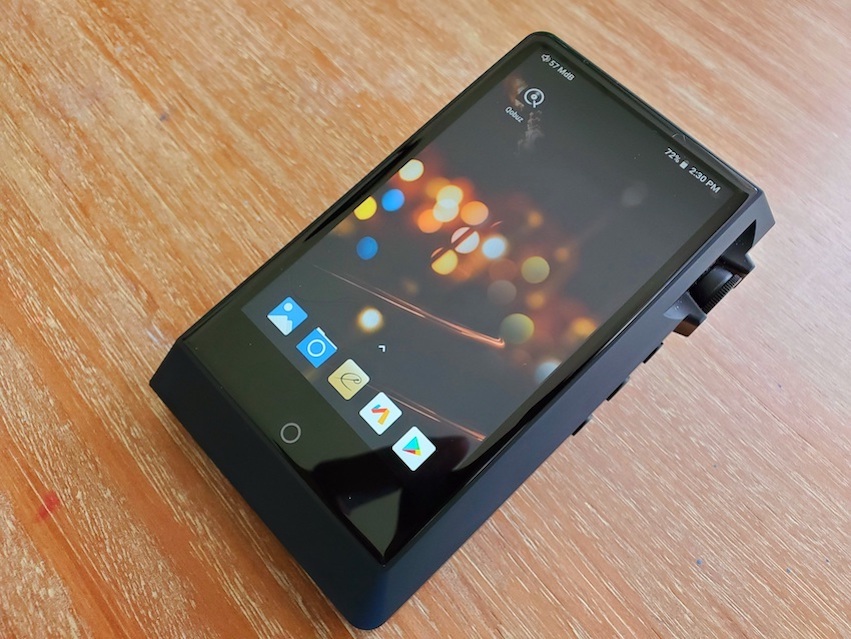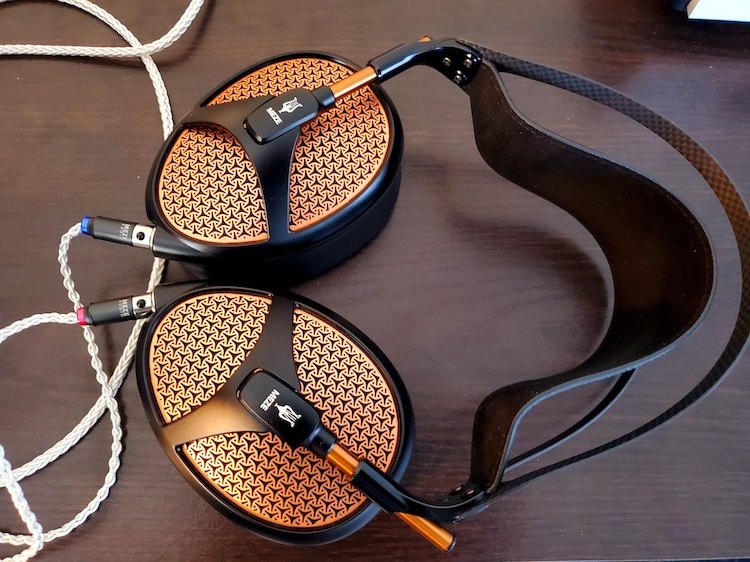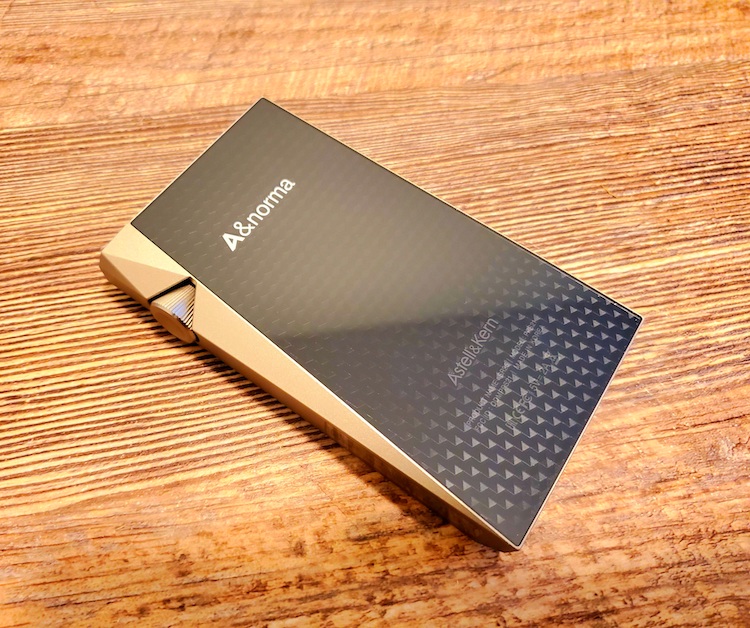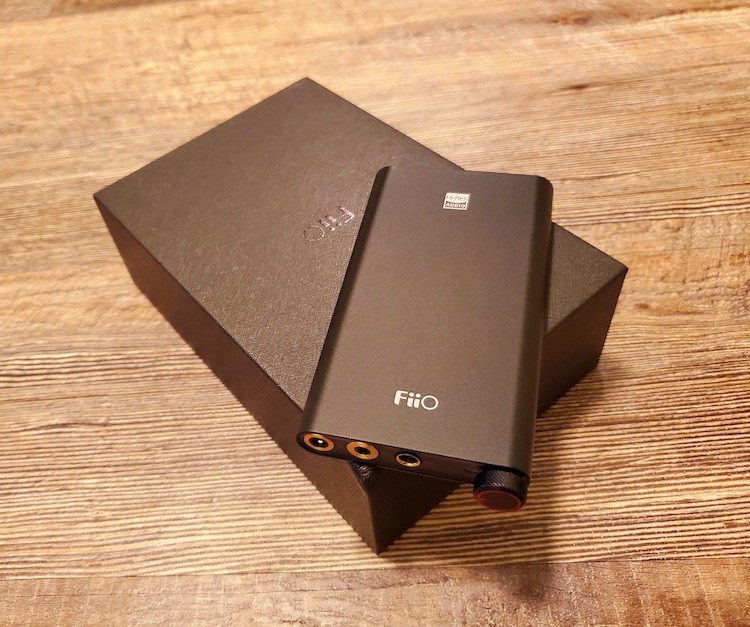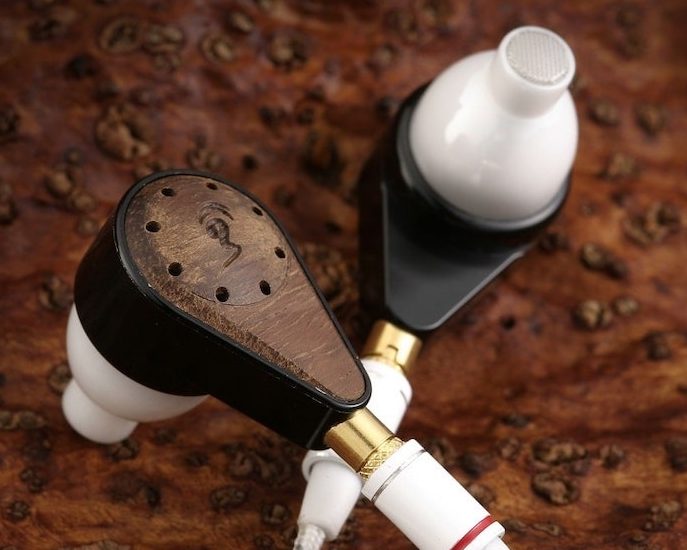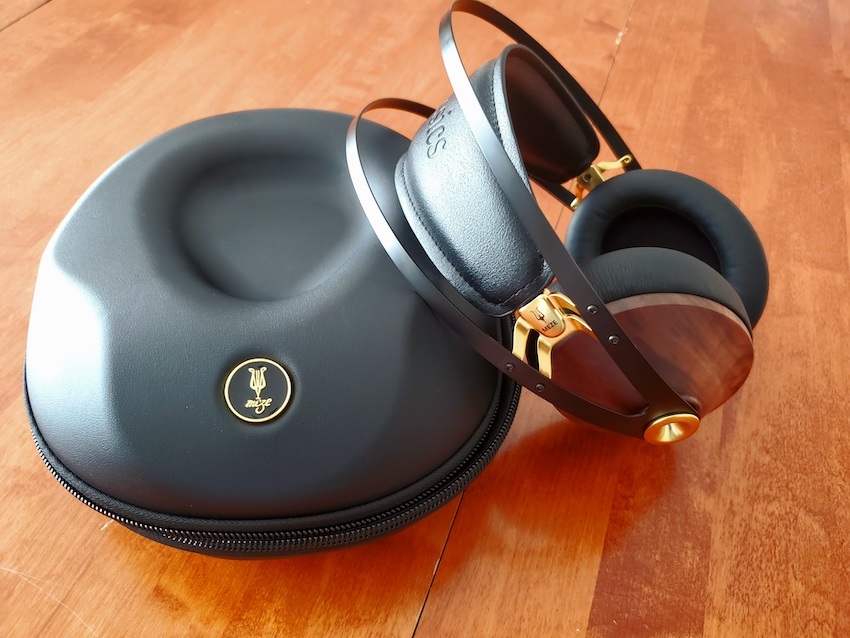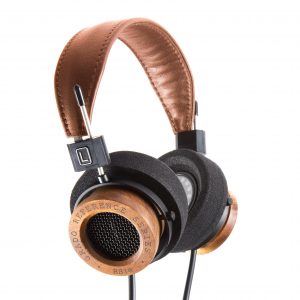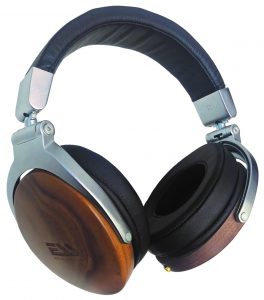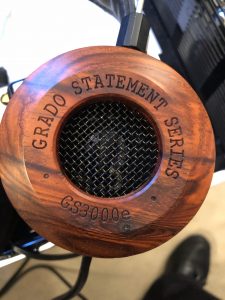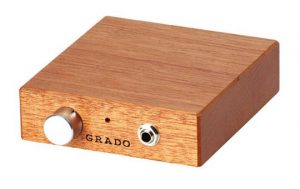Empire Ears is a family-owned In-Ear-Monitor (IEM) company based in Atlanta, Georgia, that, collectively, brings over thirty years of experience in acoustical engineering and product manufacturing.
As I mentioned in a previous review, every audio equipment company's product has it unique voice—neutral, warm, reference, detailed, bright, vivid etc—and its form. The Empire Ears' voice is, as self described, "immersive" which it achieves through "The science of precision tuning." The Empire Ears' unique form is embodied by "cutting-edge designs," which utilize a mix of jewel tones, exotic woods, and even abalone shells for its rather spectacular faceplates, which top the various acrylic bodies. And all of Empire Ears' IEMs are handcrafted domestically.
I had heard a great deal about Empire Ears, their bold, proprietary, multi-driver implementations, their quite gorgeous, Dragonhide and Bifröst faceplates, and the various tunings of its voice, which has been a collaborative effort between the company, headfi consumers, and its fan base. I was, however, unfamiliar with its voice. Though research did suggest that, perhaps, The Empire Ears Odin ($3399) might fit well into our "Wheelhouse of Sound"—musical, engaging, transparent, whereas other Empire Ears' IEMs might not. And so begin my journey with the Empire Ears' Odin.
Refrain: Unlike most reviews, this review will be non-sequential, as it will start with how the headphones actually sound and not the process of physically "undressing" them and/or laying out their various parts, specifications, etc. Think of this review then, as a non-linear movie—Memento, Kill Bill, Arrival, Eternal Sunshine of the Spotless Mind, The Terminator, Dark City, In the Shadow of the Moon, etc—that, likewise, starts at the end and winds its way to the beginning.
The Sound
The The Empire Ears Odin came fully burned-in, another treat! I was, as a result, able to quickly begin the listening, note taking, and, ultimately, the review. Though again, I am certainly aware that not all manufacturers have this luxury, given the pressing needs of their businesses and the many lines that they would be responsible for. But for reviewers it is a very good thing!
In two-channel audio, generally speaking, less drivers are more, as the more drivers one adds to a speaker, the more potential issues in attempting to make those drivers sing in a coherent and singular voice. With up to eighteen drivers in a single IEM, less is apparently not more across this headfi, product niche. Though there are, certainly, those for whom one or two drivers is still optimum. Empire Ears, by and large, embraces the former driver philosophy, which is fully embodied in its eleven driver Odin. The logical question then, how has it worked for Empire Ears and its latest flagship?
Apparently, quite well! The Odin's driver integration is rather seamless. It is also greatly transparent in its rendering of music. The Odin's highs are extended, detailed, and wonderfully resolved, easily able to summon the ethereal or holographic when called for. The Odin is also dynamic, vibrant, nimble. And while the Odin's overall tuning finds it closely adjacent to the neutral zone, there is a wisp of wetness or warmth that informs the bass and vanquishes from a very extended treble the usual suspects—sibilance, harshness, stridency.
The The Empire Ears Odin's volumetric cube—its soundstage—is broad and deep with very good height / headroom. The Odin's spatial cues—layering, separation, air, microdynamics—provide for excellent positioning. And it can be holographic and ethereal and intimate when called to be so.
The The Empire Ears Odin was reviewed with medium-sized, SpinFit eartips (which appeared to work better than the Final tips), partnered to the iBasso DX220/AMP1 Mk II via its 2.5mm, balanced, headphone output for the determination of its voice signature. The Astell&Kern SR25, and the Cayin Audio N6II/A01 Digital Audio Players were also engaged—to sound out the Odin's voice and best overall synergy (see Synergies section below).
NOTE: That wisp of wetness across the bass was present and very much evident when the iBasso DX220's 3.5mm, single-ended, headphone output was used, though some detail was lost. However, the Odin is fully optimized via balanced headphone outputs and not single-ended outputs. There is no comparison, in my opinion.
Bass
Massive Attack's "Angel" (MEZZANINE, Virgin) is cued to play. I'm expecting with the Odin's dual W9+ Subwoofers at Sub-Bass and Bass, that things will descend to deep, Stygian depths—of the Holy-Bass-Head-Grail variety. "Angel" begins. However, that is not what I heard. The Odin's bass is deep, impactful, taut, and lightening fast, but it is not the deepest, nor the most impactful. It is, however, one of the most transparent windows on what's happening across the bass, that I have heard in an IEM. On Dave Holland's Emerald Tears, the Odin's transparency frees the microdynamics of tone, texture, air, and the spatial cues of Dave Holland's fingerwork, which is truly exceptional. I stayed with the Emerald Tears album all the way through, so impressive and extraordinary was the Odin's rendering!
Midrange
The Odin's midrange, like its bass, is very transparent, which feeds detail, positioning cues, and texture. However, its midrange is closer still to the neutral zone than either the bass or the treble. So that wisp of wetness or warmth is further diminished, which translates to less density and thus a less palpable image. Joan Shelly's "We'd Be Home" (Joan Shelly, No Quarter) is rendered with outstanding clarity and detail, and yet her overall presence fades into the mix, is rather lean, and less intimate. On the track "Wild Indifference" there is a spatial cue—a tambourine in the background—at the one minute and forty-five second point that is far into the room. With the Odin the tambourine is, possibly, the farthest in the room, to date, incredibly well detailed and possibly the best to date of an IEM. A dynamic driver for the midrange, perhaps?
Treble+
Vilda Frang's "Allegro Molto II" (Veress String Trio/Bartók Piano Quintet, Alpha) plays, and it is transparent and vivid and alive! The Odin's extension across this track is remarkable, the transients, again, lightening fast, and the stage wide and deep. And despite the extension, stridency, harshness, glare, and all other gremlins to this region are banished. There is, no doubt that the Odin has more detail available across this track than almost any other IEM has rendered.
The Wrappings and Accessories
The Empire Ears Odin's box wears a white, printed sleeve with gold embossed stamping that portrays The Empire Ears' Valknut symbol above the Odin name, and below that the Odin's designation as a "Flagship Tribrid In-Ear-Monitor." A gold, embossed, Empire Ears' logo is printed on the sleeve's back.
The sleeve removed, a white box with silver embossed stamping remains with an interesting change of embossed precious metals—silver. The box's top folds back to reveal the The Empire Ears Odin secured, its wire attached, and ensconced in black, foam bedding.
Beneath the top layer, a white drawer pulls out to reveal the following accessories:
- An engraved round, black metal, travel case
- A Cleaning Cloth
- A Cleaning Tool
- And Final Audio Type E Tips - SS, S, M, L, LL
The overall package design of The Empire Ears Odin, from its outer sleeve to its two-tiered, jewel-like box, is beautifully understated, clean, and quite elegant. Additionally, its various accessories—Stormbreaker cable, the engraved, metal case, and a profusion of Final eartips—all speak to a wealth of Top-Of-The-Line (TOTL) provisions, that are themselves very well done.
Design - Look and Feel and Fit
The design of The Empire Ears Odin is vibrant, eye-catching, and very well executed, in line with what one would imagine of a TOTL product. The Odin's front façade represents an incredible commingling of vibrant colors, that beautifully distinguish it with the left and right faces wearing The Empire Ears logo and Valknut symbol, respectively. The body and its nozzle are both of a gloss, black acrylic which sets off the façades' infusion of color all the more.
The Odin utilizes a total of eleven drivers per monitor, as represented by:
- 2 Next Generation W9+ Subwoofers - Sub-Bass, Bass
- 5 Proprietary Balanced Armature Drivers - 2 Low-Mid, 2 Mid, 1 Mid-High
- 4 Premium Electrostatic Drivers - 2 High, 2 Super-High
The included cable is The Empire Ears' Stormbreaker ($1299), a collaborative effort between Empire Ears, PWAudio, and PENTACONN (Japan), and is itself TOTL. The Stormbreaker is a two-wire, four-conductor OCC (Ohno Continuous Cast) copper cable which utilizes Litz geometry with its variable cable gauges. It uses a two-pin, 0.78mm connectors, that are affixed to a chrome tube, with left (L) and (R) indicators. The Stormbreaker's Y-splitter is a CNC silver Valknut, with a chin slider. The cable's standard termination is a 2.5mm connector, though there are options for 4.4mm (balanced) and a 3.5mm (single-ended) connector.
The The Empire Ears Odin, though large, provides for a comfortable fit and can be worn for several hours with no ill-effects, but this too is subjective given the range in ear sizes.
Specifications
- 11 Proprietary Drivers, Tribrid Design
- 2 Next Generation W9+ Subwoofers - Sub-Bass, Bass
- 5 Proprietary Balanced Armature Drivers - 2 Low-Mid, 2 Mid, 1 Mid-High
- 4 Premium Electrostatic Drivers - 2 High, 2 Super-High
- 7-Way synX Crossover Network
- EIVEC - Empire Intelligent Variable Electrostatic Control Technology
- A.R.C. Resonance Mitigation Technology
- Impedance: 3 Ohms @ 1kHz
- Frequency Response: 5 Hz - 100kHz
- Sensitivity: 108dB @ 1kHz, 1mW
- Bespoke Stormbreaker UPOCC Copper Litz Cable, Quad Conductor Dual Gauge Design
Drivability
The Empire Ears Odin has a very low impedance (3Ω -Ohms) and a relatively high sensitivity (108dB). The Odin are, as a result, easy to drive and work well with numerous devices ranging from smartphones to computers to the entire Audioquest DragonFly family to DAPs to desktop systems. The Odin was a pleasure to use and scaled beautifully, with all sources.
Comparisons
It came down to four songs that would be utilized to help differentiate the various IEMs. The comparisons were done using the following four tracks/songs:
- Joan Shelly's "Wild Indifference" (Joan Shelly, No Quarter)
- Olafur Arnalds' "Árbakkinn" (Island Songs, Mercury. Universal France)
- Massive Attack's "Angel" (MEZZANINE, Virgin) and
- Vilda Frang's "Allegro Molto II" (Veress String Trio/Bartók Piano Quintet, Alpha)
The various IEMs were partnered to the iBasso DX220 AMP1 Mk II and for comparison across the various IEMs the 3.5mm singled-ended output was used and the 2.5mm when possible.
Vision Ears EVE 2020 ($1,300): (120.5dB SPL/ 25 Ohms vol. 82/150)
The Vision Ears EVE brought a richness, warmth, and palpability that saw Joan Shelly center stage on "Wild Indifference." Further, there was a density and weight across the midrange, via Vision Ears' decision to place a dynamic driver there, that the Odin simply could not match. However, the level of detail that the Odin provided and its transient speed proved far and above the EVE's ability. Massive Attacks' "Angel" via the EVE was cannon fire and pyrotechnics, as the bass was deep, potent, tight, and driving and, yet, incredibly musical. The Odin brought bass that was decidedly more transparent, faster (even more so via the 2.5mm output!) but it had not the weight nor the strength of the EVE's bass. No other contender did.
Empire Ears HERO ($1,349) : (105dB SPL/ 17.6 Ohms vol. 111/150)
The Empire Ears HERO would more closely mirror the Vision Ears EVE than its sibling, rendering a more musical and engaging portrayal of Joan Shelly's "Wild Indifference." But again overall transparency was by far an Odin strength, as was speed and the various macrodynamic cues easily rendered by the Odin. On bass extension the Odin established a clear edge against the HERO, which seemed even more diminished for the HERO across the bass range. The HEROs bring nearly as much transparency to a recording as does the Odin and it will render copious amounts of detail across treble but not at the same depth or with the same transient speed or texture as the Odin.
Vision Ears ELYSIUM ($2500) : (105dB SPL/ 16.4 Ohms vol. 105/150)
The Vision Ears ELYSIUM (review coming) brought an analog-like ease to the midrange that dropped shoulders, eyebrow ridge, and all other indicators of bodily stress, as it beautifully rendered Joan Shelly's "Wild Indifference." And while the ELYSIUM brought to the fore more detail than its sibling, it was still not the match for the Odin in this respect, nor was it a match with regard to transient speed. Though the in-room image of the tambourine was equaled by the ELYSIUM. On Massive Attacks' "Angel" the ELYSIUM gave up ground to its sibling and to the Odin as well. The Odin presented a more coherent, transparent, and driving bass than the ELYSIUM, though the ELYSIUM brought a musicality and warmth that made it very engaging.
Synergies
iBASSO DX220 AMP1 Mk II ($979)
The marriage of the iBasso DX220 AMP1 Mk II and the The Empire Ears Odin remain fresh in the memory, as this pairing was incredibly transparent and provided a very broad and deep soundstage, great separation and layering of performers via a wealth of macrodynamic information. The combo was also responsible for extended, detailed, and non-fatiguing highs. There is a very slight wetness, warmth that travels the Odin's frequency range, though it is more prominent on the bass and the treble, while it appears to diminish across the midrange. This proved a rather good match.
CAYIN N6II/A01 ($1299)
Vocals with this combination, via the single-ended output, were more fleshed out, forward in the mix, imbued, perhaps, with a slight warmth / wetness, and yet detail was still good. The overall voicing sat closely to the neutral zone, though not as close as the DX220 and Odin pairing. Highs were also well rendered with brushes across cymbals, hi-hats, massed violins, and percussions nicely resolved. Bass, however, did not have the potency, nor the slam, nor the impact as compared to that of the iBasso DX220, Odin pairing, which has not been true for all IEMs. And overall transparency experienced a slight diminishment. Much of the above—transparency, bass response—improves via the Cayin N6II's 4.4mm balanced headphone output. Though overall the Odin, iBasso DX220 pairing was the more transparent.
Conclusion
The Empire Ears Odin delivers tremendous transparency, which offers up a wealth of microdynamics and spatial cues, critical in the determination of positioning and layering, as well as a midrange laid wide open from a wealth of details. The Odin's soundstage is quite impressive—deep, wide, with very good headroom and holographic when called to be so. Further, the Odin provides beautifully extended highs, that are sibilance, grain free, and non-fatiguing. And it's a gorgeous IEM, truly. However, despite the Odin's dual W9+ subwoofers the bass does not bring the rumble, nor the impact, nor does it reach to the Stygian depths of the Holy-Bass-Head-Grail. And this remained true of its bass response despite a wide range of pairings. Lastly, The Empire Ears Odin will be fully optimized when it is being driven from a balanced headphone output, as running the Odin single-ended will, in our experience, diminish its overall strengths and its potency.
I recommend The Empire Ears Odin, and especially so to those for whom transparency across the frequency spectrum, extended highs, a cavernous soundstage, and a voicing which finds it nearly abutting the neutral zone is mana from heaven.
Pros: Incredible transparency, extended highs, spacious and, at times, truly holographic soundstage.
Cons: Bass response. Driver Flex.
Odin
Retail: $3399
Empire Ears
5600 Oakbrook Pkwy
Bldg. 100, Ste. 100
Norcross, GA 30093
770.945.0065
Kermit Heartsong is a published author, writer, and working screenwriter, who brings an established writer's approach / perspective to Personal HiFi reviews. Kermit has owned numerous high-end and ultra-high-end components / systems and has tested numerous pieces of audio gear over the course of his life. And he is a music lover first and foremost with regard to the types of Personal HiFi equipment that he enjoys and enjoys to review.
In conjunction with Positive Feedback, Kermit, as an Associate Editor for PF, will focus on Personal HiFi and headphones for the venerable and long standing audio magazine. Kermit is currently Managing Director of AudioKey Reviews. AudioKey Reviews' mandate is to review Personal HiFi equipment from headphones to DACS to Amps/DAC to IEMs and, in doing so, to seek out that which is, above all, musical, transparent, and engaging.




